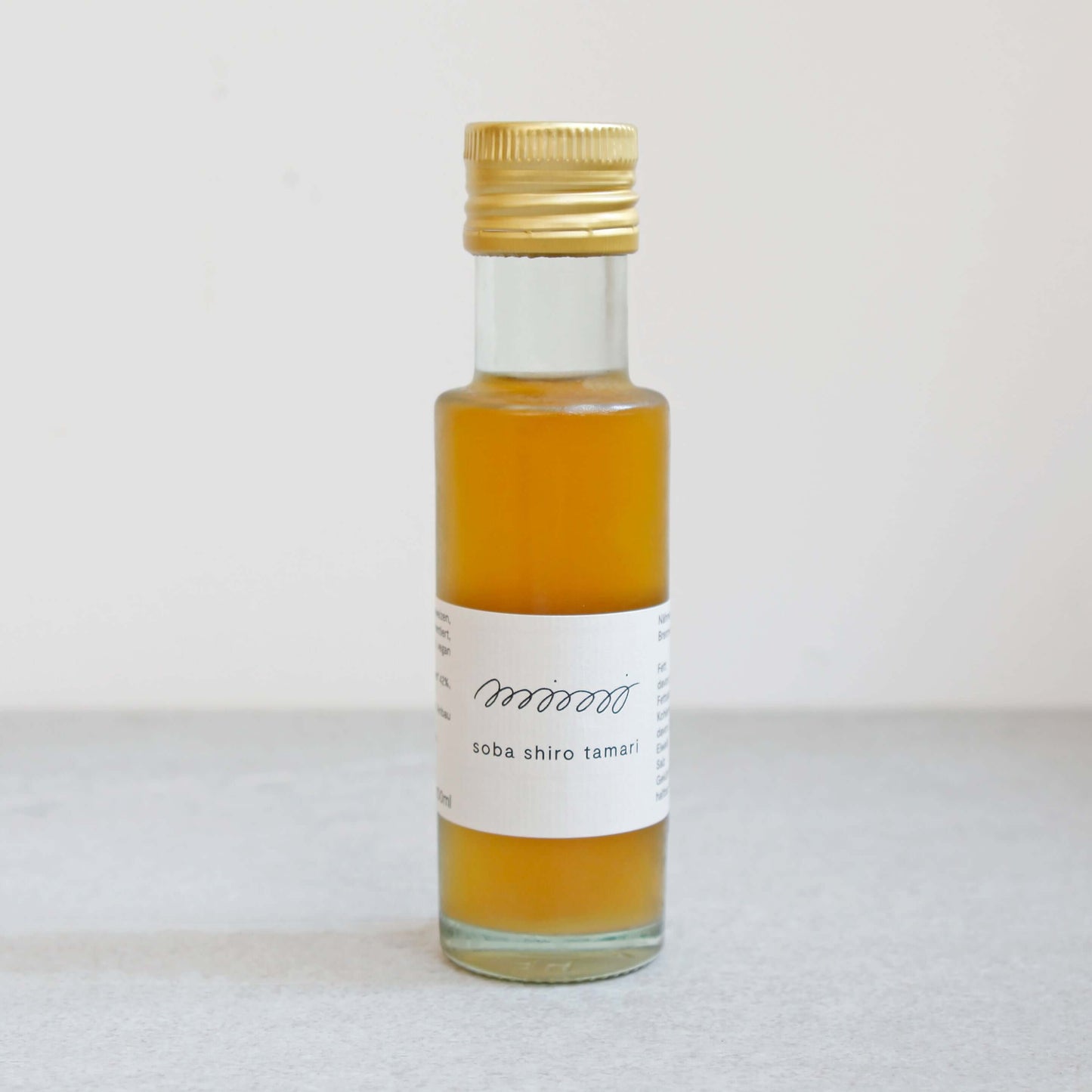soba tamari
soba tamari
- Gluten-free white tamari made from buckwheat
- Mild but complex taste, versatile in use
- Does not discolour light ingredients thanks to its light colour
Couldn't load pickup availability
Share

Collapsible content
Beschreibung
naturally fermented, unfiltered,raw,gluten-free,vegan,handmadein Berlin
Our organic soba shiro tamari, a white tamari, is made from buckwheat (soba in Japanese) and is characterised by its subtle spicy notes and light floral to earthy-mushroomy aromas. After maturing naturally for ten months in barriques, our buckwheat tamari has a radiant yellow-golden colour and is gluten-free thanks to the buckwheat.
Verwendung
Its delicate flavour and light yellow colour make our buckwheat tamari the perfect seasoning for light dishes. You can use the soba shiro tamari to enhance light vegetables such as cauliflower, asparagus or salad without changing the natural colour of the ingredients and masking their own flavour. Buckwheat tamari is also a suitable accompaniment for white fish and meat (dishes) because it does not overpower their flavour, and there are no limits to its use.
Experiment to your heart's content. You can also try our soba shiro shoyu.
Hintergrund
Tamari originates from the Tokai region and was developed in the prefectures of Aichi, Mie and Gifu. It is usually made exclusively from soya beans, although in some traditions a small amount of wheat is added. The production of tamari is characterised by a unique method that differs from other types of shoyu. Instead of a loose mixture of soya beans and wheat, which is used for fermentation with koji in other types of shoyu, only soya beans are used to make tamari. After steaming, the beans are coarsely mashed and formed into small balls called mamekoji or misodama. These balls are then inoculated with koji spores and fermented for around 3-4 days.
Another characteristic feature of tamari production is the covering of the very firm mash with stones. White tamari stands out clearly from classic, savoury soy sauces. Unlike the more commonly known dark tamari and other soy sauces, which are made from soya beans, water and salt, white tamari is made exclusively from wheat, water and salt. Its maturing time is considerably shortened. This gives it its light colour and mild flavour.
Zutaten
Spring water (Hameln-Pyrmont), buckwheat* 42% (Erding), sea salt (Mallorca), A. oryzae
*certified organic
DE-ÖKO-070 (organic control body)
You can find out more about our raw materials here.
Haltbarkeit
Our soba shiro tamari has a best-before date of seven months from bottling, but can usually be kept for much longer. Warm storage temperatures can cause the sauce to darken and change its flavour. We therefore recommend keeping soba shiro tamari in the fridge to preserve its quality as much as possible.

